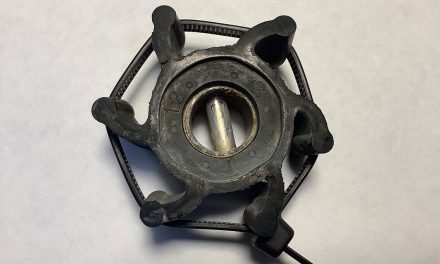
In late September, our marina manager asked if I would be interested in salvaging a few sailboats in the winter storage yard. All had been neglected and eventually abandoned by their owners. In each of these once beautiful and functional sailboats, water had accumulated inside, in some cases 1 to 2 feet above the cabin sole.
The cost to repair any of these boats well exceeded their value. Each had long crossed over the point to which their parts were worth more than their whole.
It was a depressing enterprise.
For $200.00 each, I became the owner of 8 boats: an O’Day 22, a Seafarer 23, a C&C 24, a C&C 25, a Scampi 30, a C&C 33, a C&C 38, and a C&C 38-2.
I started by removing the keels and sending 18,000 lbs. of lead to Mars Keels in Ontario. They sent a truck, no freight charges for me. Then I removed all the hardware from each boat before cutting up the hull and deck for landfill disposal. I plan to resell as much of the equipment and hardware as possible.

I learned some things from this experience.
- Do not allow water to accumulate inside of your boat. Nearly all the deck fittings I removed were not properly bedded. In some cases, this served to damage the deck core, in other cases, this allowed water inside. Do not assume that your deck penetrations are watertight or will remain watertight. What starts as a small problem can ruin any boat over time.
- For long-term lay-up, install a drain fitting in the lowest part of your hull (keel) sump side. This way, if water does gets in, it can also get out. This is routinely done on wood boat hulls with a fitting called a garboard drain plug. I’ve used a ½-inch mushroom head or flush bronze thru hull on all 5 of my boats over the years, and encourage others do the same.
- When installing or re-bedding hardware, countersink holes in your deck so that the new sealant can form a ring-type seal around the shank of the bolt or screw. This will help to ensure the integrity of the deck core.
- Quit pressure-washing the deck. The 3,000-PSI nozzle pressure can compromise any seal between the deck and the fitting. That is the same pressure your boat and her fittings would be subjected to sitting on the bottom at a depth of 6,700 feet!
- In any areas where the core is wet, remove the core and repair the area before the problem migrates (“Building a Solid Base,” January 2018, Good Old Boat magazine). Wet cores are especially problematic in boats stored in areas that routinely see temperatures drop below 32 degrees Fahrenheit. Each time the wet core freezes, it expands and further compromises the bond between the core to the laminate. This separation then facilitates additional water intrusion and deck damage can move well beyond the initial entry point. This is how moisture can travel sideways in end-grain balsa structures.
 These 8 good old boats are gone. But I hope my observations motivate boat owners to address/prevent water intrusion both inside and topsides. Taken care of, there’s no reason the average fiberglass sailboat won’t still be doing what she was built to do many decades into the future.
These 8 good old boats are gone. But I hope my observations motivate boat owners to address/prevent water intrusion both inside and topsides. Taken care of, there’s no reason the average fiberglass sailboat won’t still be doing what she was built to do many decades into the future.




